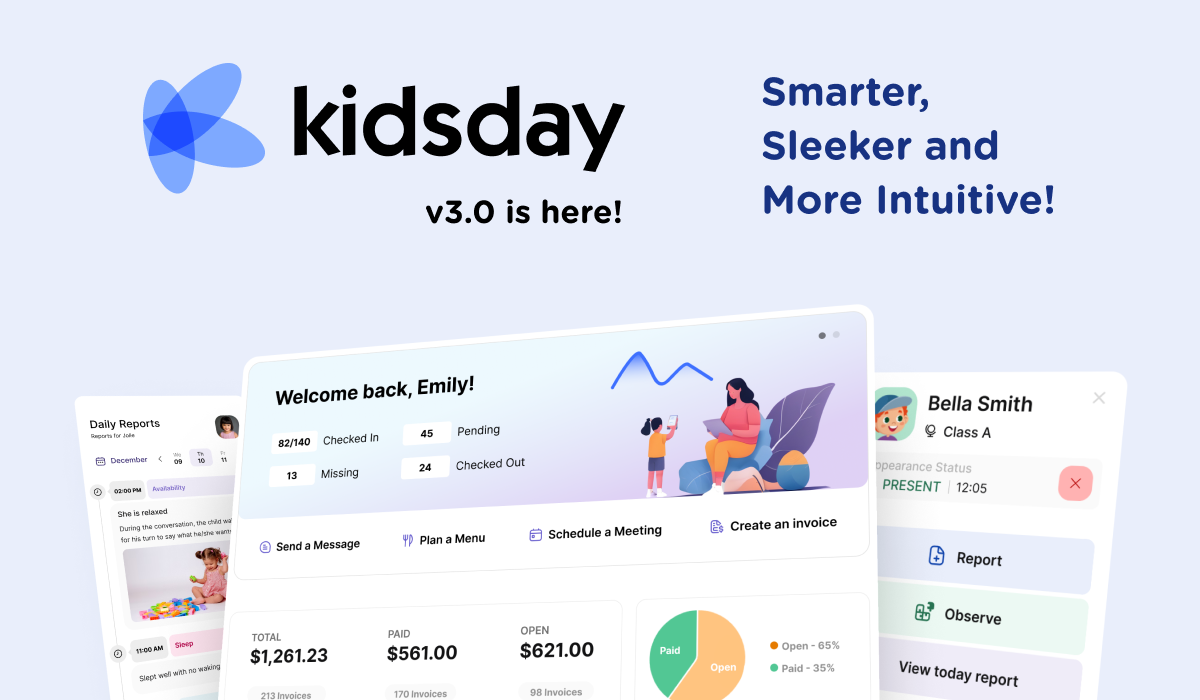Preschool teachers juggle countless responsibilities every day, from lesson planning to managing a classroom full of curious, energetic learners. Staying organized is essential to ensure smooth operations and provide the best learning experience for children. Here are practical strategies to help you stay on top of your game:
1. Plan your week in advance
Set aside time each week to prepare lesson plans, organize activities, and review your schedule. Using tools like planners or digital apps can help streamline this process. The Kidsday app, for example, allows you to organize lesson plans, track events, and communicate with parents, all in one place.
2. Create a daily routine
Young children thrive on routine, and having a consistent daily schedule helps both you and the children stay organized. Structure your day with designated times for activities such as circle time, snack breaks, outdoor play, and cleanup. Display the schedule in the classroom for easy reference.
Tip: Use visuals or picture charts to help children understand and follow the routine.
3. Organize Classroom Materials
A clutter-free environment promotes a stress-free mind. Invest in storage solutions such as labeled bins, shelves, and file organizers for books, art supplies, and teaching aids. Involve children in keeping the classroom tidy by assigning them small tasks like returning toys to their bins.
Tip: Rotate toys and books regularly to keep the children engaged and reduce clutter.
4. Use Technology to simplify tasks
Administrative tasks like tracking attendance, documenting activities, and communicating with parents can take up valuable time. Apps like kidsday simplify these tasks by allowing you to record daily routines, share updates with parents, and even generate attendance reports effortlessly.
Tip: Set aside specific times to update digital tools to maintain consistency without feeling overwhelmed.
5. Prioritize and delegate
Identify your most important tasks for the day and tackle those first. If possible, delegate responsibilities to assistants or involve children in simple tasks like distributing materials or cleaning up after an activity.
Tip: Use a checklist to keep track of what’s been completed.
6. Prepare for the Unexpected
Flexibility is key in a preschool setting. Keep a "just-in-case" stash of activities, snacks, and extra supplies for moments when plans don’t go as expected.
Tip: Create a file of quick, low-prep activities for times when you need to adapt your plans.
7. Communicate Effectively with Parents
Regular communication with parents helps build trust and ensures everyone is on the same page. Send updates about classroom activities, upcoming events, and their child’s progress through newsletters or apps like Kidsday, which offers seamless parent-teacher communication features.
Tip: Use templates for newsletters or messages to save time while keeping parents informed.
8. Take Care of Yourself
Staying organized isn’t just about the classroom; it’s also about maintaining your well-being. Ensure you have a work-life balance, take regular breaks, and prioritize self-care. A well-rested teacher is an organized teacher.
Tip: Use your planning time effectively so you can leave work at school as much as possible.
Staying organized as a preschool teacher requires intentional planning, effective use of tools, and flexibility. By implementing these strategies, you’ll not only reduce stress but also create a nurturing and engaging environment for your little learners. Remember, tools like kidsday can be your best ally in simplifying daily routines and focusing on what matters most—teaching and inspiring young minds.








